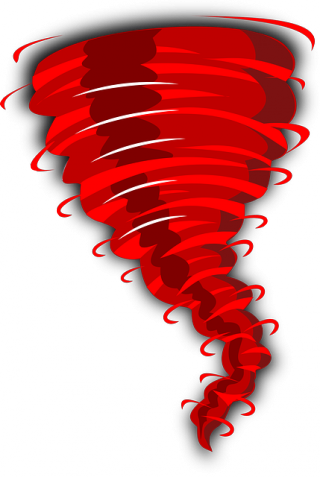Law and Crime
How Troubled Kids are like Tornadoes
Early warnings for hazardous weather mirror research on juveniles at risk.
Posted July 18, 2015

Recently I read What Stands in a Storm, by Kim Cross. I was intrigued with her description of the warning signs for when a tornado is about to form and cut its destructive swath across some town or city. The signs sounded similar to what I teach in my Dangerous Minds course about juveniles at risk for becoming violent.
First, I want to say that the book is outstanding. Cross’ reporting, as well as the way she structures the narrative, is highly engaging. She teaches tornado science while keeping the human element (forecasters, chasers, and victims) in perspective. Each element nicely balances the other, making the book a page-turner.
Cross tells the tale of how Tetsuya “Mr. Tornado” Fujita began to study tornadoes in 1953. He developed the F-Scale that categorizes these storms from 0 to 5 (now the EF-Scale), based on his observation of the patterns left in the tracks of violent storms. These patterns held the key to how a tornado forms.
Indulge me a moment (and I hope I got this right):
It starts with surface lows that hover over the ground. An invisible boundary – a dryline – separates potentially clashing bodies of moist and dry air (an important factor in storm frequency and severity). As the dryline shifts, humid air flows in, which fuels thunderstorms. The atmosphere grows unstable as “blobs of warm air” rise fast through cooler air above them. They meet wind blowing in a different direction, which causes them to spin.
At the surface, surrounding air rushes in to fill the rising air’s void, spiraling upward into a rotating column. This, according to Cross, transforms into a supercell that spits lightning.
During such conditions, the storm prediction center issues a watch. When a funnel is spotted, they issue warnings.
Bear with me. We’ll get to the kids.
We study these conditions so we can predict what’s coming – the farther ahead, the better the chance of warning people in its path. The behavior of past tornadoes is fundamental to future predictions. The key question, says Cross, is “What is the difference between supercells that produce tornadoes and supercells that do not?”
And that’s the question we raise about kids at risk for becoming violent: what are the factors in unstable kids that will likely erupt into violence? How can we spot them? How can we protect potential victims?
“Dangerousness” has been a central issue in the legal/mental health arena for years, yet establishing an empirical body of data from which to make accurate predictions has been difficult.
During the 1980s, studies were undertaken to develop instruments that would improve the percentage of correct evaluations. Researchers emphasized specific risk factors. (Remember: surface conditions, drylines, rising warm air, wind shear, etc.)
Like tornado scientists, they understood that “dangerousness” had to be segregated into component parts, and that an array of factors must be assessed from multiple domains. Harm must be scaled in terms of seriousness and assessed with multiple measures.
The probability estimate of risk had to be acknowledged as something that evolved with changes in time and context. The goal was prediction and management. Patterns from past cases assisted with calculations.
Like categories for tornadic intensity, risk for violence is evaluated as low, medium or high.
Among the risk factors, which have their metaphoric counterpart in the formation of a tornado, are preoccupations with themes of violence, low frustration tolerance in stressful situations, significant recent stressors, loss of personal power, burning resentment, sudden social withdrawal, persistent unabated anger, increased substance abuse, mental instability, and collecting weapons.
Relating weather to this list, I see the unstable conditions, a void that must be filled, a collection of force and pressure, lightning, a moving dryline, and blobs of warm air (rising tempers) penetrating cool air. You see where I’m going. It’s not a perfect metaphor, but I couldn’t help but notice in tornado science similar concerns, measures and goals as we have in psychology and criminology for kids at risk.
We want to understand how such violence forms, we want to warn target people, and we hope to eventually learn how to defuse the pressure before it causes excessive damage.




